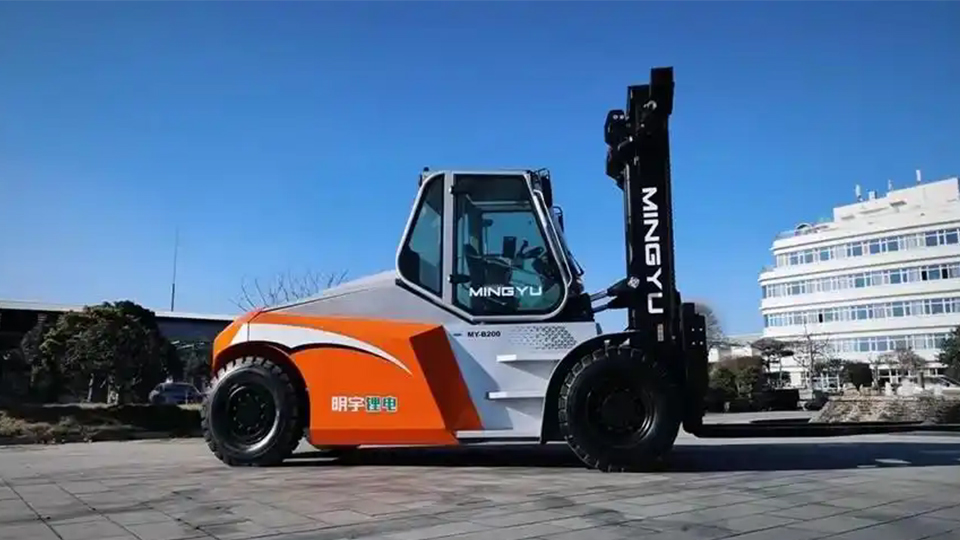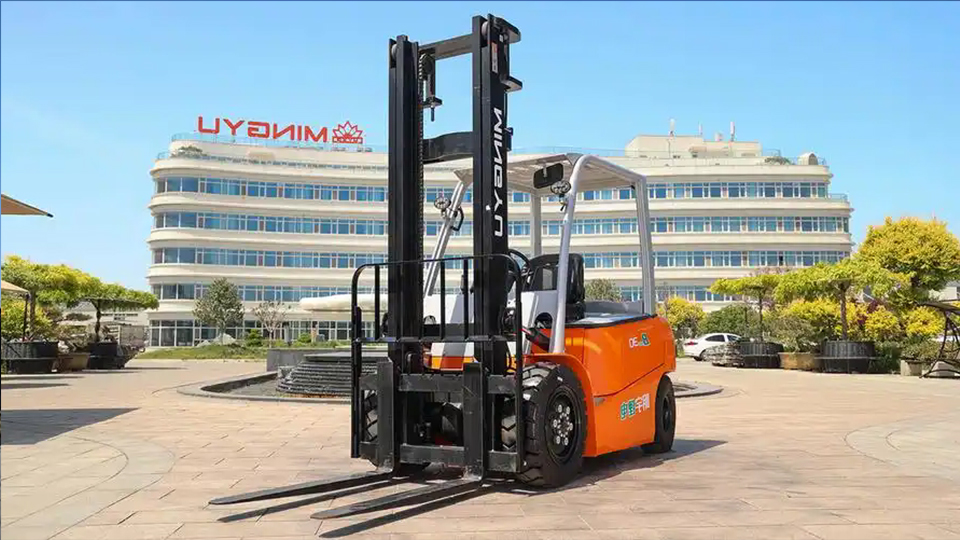
Mastering the Forklift: A Technical Guide to Safe and Efficient Operation
Forklifts are indispensable in warehousing, construction, and manufacturing, facilitating the movement of heavy and bulky materials. However, their operation demands a high level of skill and awareness to ensure safety and prevent accidents. This technical article provides a comprehensive guide on how to drive a forklift safely and efficiently, covering pre-operational checks, fundamental driving techniques, load handling, and safety protocols.
Pre-Operational Checks: Ensuring a Safe Start
Before operating any forklift, a thorough pre-operational inspection is mandatory. This inspection ensures the machine is in optimal condition and mitigates potential hazards.
Visual Inspection:
Tires/Wheels: Check for damage, wear, and proper inflation. Pneumatic tires should have adequate air pressure, while solid tires should be free of cuts or gouges.
Forks: Inspect for cracks, bends, or other damage. Ensure they are securely attached to the carriage.
Mast and Carriage: Examine for any signs of damage, loose components, or hydraulic leaks.
Hydraulic System: Inspect hoses, cylinders, and connections for leaks or damage. Check the hydraulic fluid level.
Battery/Fuel System: For electric forklifts, check the battery charge level and connections. For internal combustion (IC) forklifts, check the fuel level and ensure there are no leaks.
Safety Devices: Verify that the seatbelt, horn, lights, and warning devices are functioning correctly.
Overhead Guard: Ensure the overhead guard is securely attached and undamaged.
Fluid Levels: Check engine oil, coolant, and transmission fluid levels (for IC forklifts).
Leak Check: Look for any signs of fluid leaks under the forklift.

Operational Checks:
Controls: Test all controls, including the lift, tilt, and travel levers, to ensure they operate smoothly and responsively.
Brakes: Test the service and parking brakes for proper functionality.
Steering: Verify that the steering is responsive and that the forklift turns smoothly.
Lifting Mechanism: Test the lifting and lowering functions of the forks, ensuring they operate smoothly and without jerking.
Tilt Mechanism: Test the tilt function to ensure it operates correctly.
Horn and Lights: Test the horn and lights to ensure they are working.
Fundamental Driving Techniques: Mastering the Basics
Operating a forklift requires a unique set of driving skills.
Starting and Stopping:
Seatbelt: Always fasten the seatbelt before operating the forklift.
Starting: For IC forklifts, start the engine and allow it to warm up. For electric forklifts, turn on the power.
Releasing the Parking Brake: Disengage the parking brake before moving.
Smooth Acceleration: Accelerate smoothly and gradually.
Controlled Stopping: Apply the brakes smoothly and gradually to avoid sudden stops.
Steering and Maneuvering:
Rear-Wheel Steering: Forklifts typically have rear-wheel steering, which makes them highly maneuverable but also requires careful handling.
Wide Turns: Make wide turns to avoid swinging the rear of the forklift into obstacles.
Slow Speed: Maintain a slow and controlled speed, especially in confined spaces.
Clearance: Be aware of the forklift's dimensions and ensure adequate clearance when maneuvering.
Blind Spots: Be aware of blind spots and use mirrors or a spotter when necessary.
Travel Direction: Drive in the direction of travel, and avoid driving in reverse unless absolutely necessary.
Ramp and Slope Operation:
Ascending Ramps: Drive forward when ascending ramps or slopes.
Descending Ramps: Drive in reverse when descending ramps or slopes.
Avoid Turning: Avoid turning on ramps or slopes.
Parking Brake: Engage the parking brake when stopped on a ramp or slope.
Load Handling: Safe and Efficient Material Movement
Proper load handling is crucial for preventing accidents and damage.
Load Assessment:
Weight and Dimensions: Determine the weight and dimensions of the load.
Load Center: Identify the load center, which is the point where the load's weight is evenly distributed.
Capacity Plate: Refer to the forklift's capacity plate to ensure the load does not exceed the forklift's rated capacity.
Picking Up a Load:
Approach Slowly: Approach the load slowly and carefully.
Level Forks: Ensure the forks are level and positioned at the appropriate height.
Insert Forks: Insert the forks fully under the load.
Tilt Back: Tilt the mast back slightly to stabilize the load.
Lift Slowly: Lift the load slowly and smoothly.
Check Stability: Ensure the load is stable and secure before moving.

Transporting a Load:
Low Load Height: Keep the load as low as possible during transport.
Smooth Movements: Avoid sudden movements or turns.
Clear Path: Ensure the travel path is clear of obstacles.
Maintain Visibility: Maintain clear visibility while transporting the load.
Travel Speed: Maintain a slow and controlled speed.
Placing a Load:
Approach Slowly: Approach the placement location slowly and carefully.
Level Forks: Ensure the forks are level and positioned at the appropriate height.
Lower Slowly: Lower the load slowly and smoothly.
Release Load: Release the load gently onto the placement surface.
Back Away Slowly: Back away slowly and carefully.
Safety Protocols: Preventing Accidents
Adhering to strict safety protocols is paramount when operating a forklift.
Pedestrian Safety:
Yield to Pedestrians: Always yield to pedestrians.
Use Horn: Use the horn to warn pedestrians of your presence.
Maintain Safe Distance: Maintain a safe distance from pedestrians.
Slow Speed: Operate at a slow speed in areas with pedestrian traffic.
Warehouse Safety:
Designated Lanes: Follow designated forklift lanes.
Clear Aisles: Keep aisles clear of obstructions.
Proper Lighting: Ensure adequate lighting in the work area.
Avoid Racking: Avoid striking racking or other structures.
Load Stacking: Stack loads properly to prevent them from falling.
Refueling/Recharging Safety:
Ventilation: Ensure adequate ventilation when refueling IC forklifts.
No Smoking: No smoking or open flames are allowed near refueling or recharging areas.
Battery Safety: Follow proper procedures for charging electric forklift batteries.
Proper PPE: Wear appropriate personal protective equipment (PPE).
Training and Certification:
Formal Training: Complete a formal forklift training program.
Certification: Obtain forklift operator certification.
Regular Refreshers: Participate in regular refresher training.
Site Specific Training: Obtain site specific training, for the location that you are working within.
Emergency Procedures:
Know Emergency Stops: Know the location and operation of emergency stops.
Fire Extinguishers: Know the location and operation of fire extinguishers.
Evacuation Plan: Be familiar with the facility's evacuation plan.
First Aid Kit: Know the location of the first-aid kit.
By adhering to these comprehensive guidelines, you can significantly enhance your forklift operating skills and contribute to a safer and more efficient work environment. Proper training, consistent adherence to safety protocols, and a thorough understanding of forklift operation are essential for mastering this complex and critical piece of equipment.
Name: selena
Mobile:+86-13176910558
Tel:+86-0535-2090977
Whatsapp:8613181602336
Email:vip@mingyuforklift.com
Add:Xiaqiu Town, Laizhou, Yantai City, Shandong Province, China